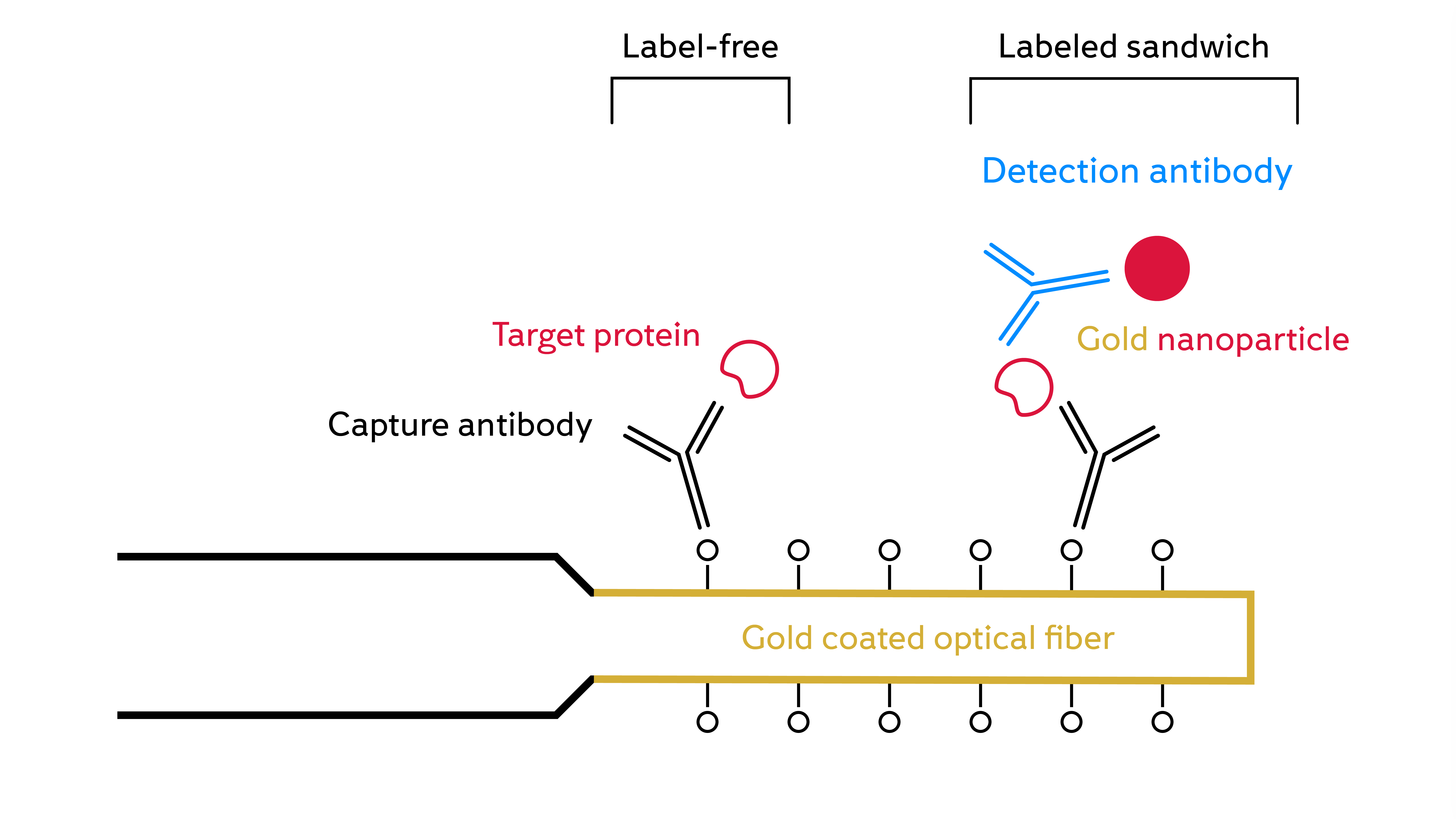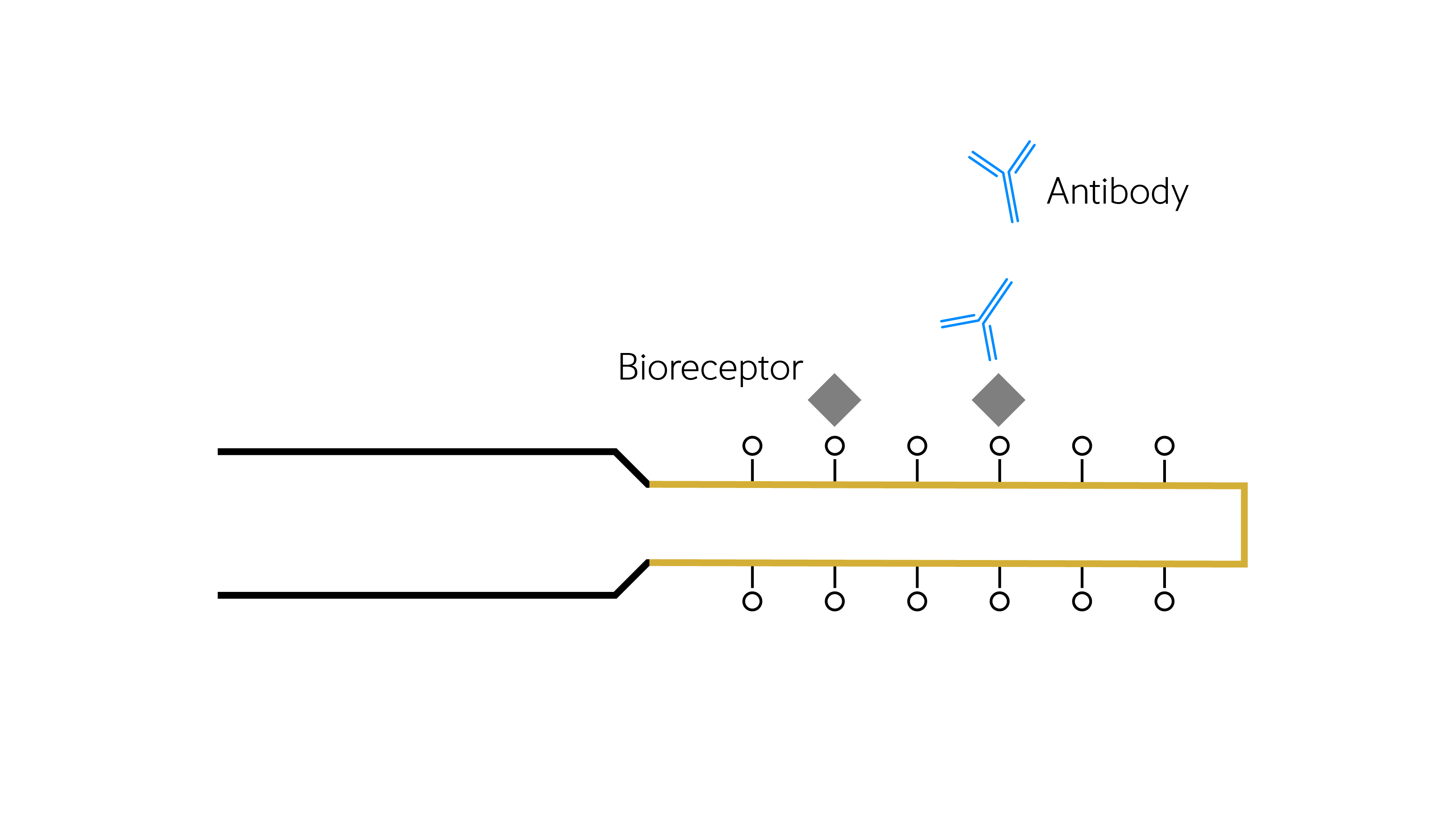WHITE FOx biosensors can accurately detect and quantify your target protein in a variety of sample matrices. Label-free pM to µM sensitivities in 10 minutes make our fiber-optic biosensor a versatile development tool.
- Fast assay time (10 min)
- Clinically relevant sensitivity (0.97 – 80 ng/mL in 100x diluted sample)
- Results better than ELISA, in much less time
- Minimum sample preparation (serum, plasma and whole blood)



